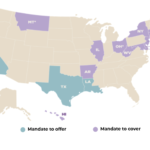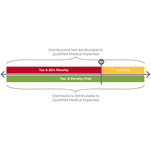No matter how well a financial advisor may understand and is able to explain a concept, the fact is that different people have different learning modalities, and oftentimes, advisors need to incorporate a variety of presentation methodologies in order to help clients understand important concepts relevant to their financial lives. Sometimes it takes creativity and innovation to discover how clients learn best, and by staying open to novel ideas and saying “yes” to unusual experiences, advisors may be surprised to find not only that they might come up with effective ways to communicate effectively, but also that they can uncover exciting opportunities for themselves along the way.
In our 23rd episode of Kitces & Carl, Michael Kitces and financial advisor communication expert Carl Richards talk about how a simple back-of-the-envelope Sharpie sketch was Carl’s solution to helping one client eventually achieve the “Aha!” moment of understanding a difficult financial concept. And how continuing to practice his sketch work as a way to simplify complex topics unexpectedly landed him a long-running (10 years and counting!) stint as the New York Times’ “Sketch Guy” columnist and ultimately opened up the world of international art exhibitions showcasing his work. Even without any formal training in art, Carl has evolved his sketching into a central part of his work by sticking to simple tools and persevering with continuous practice.
Ultimately, the key point is that giving yourself permission to pursue unplanned adventures might just lead to rich and rewarding experiences well worth the risk. And even though the business of planning and preparing clients for the future is often largely an objective, data-driven process, creativity and the flexibility to say “yes” to unplanned opportunities can be powerfully valuable tools used to tackle unique and unexpected situations and to help clients attain their unconventional, off-the-beaten-path goals.










